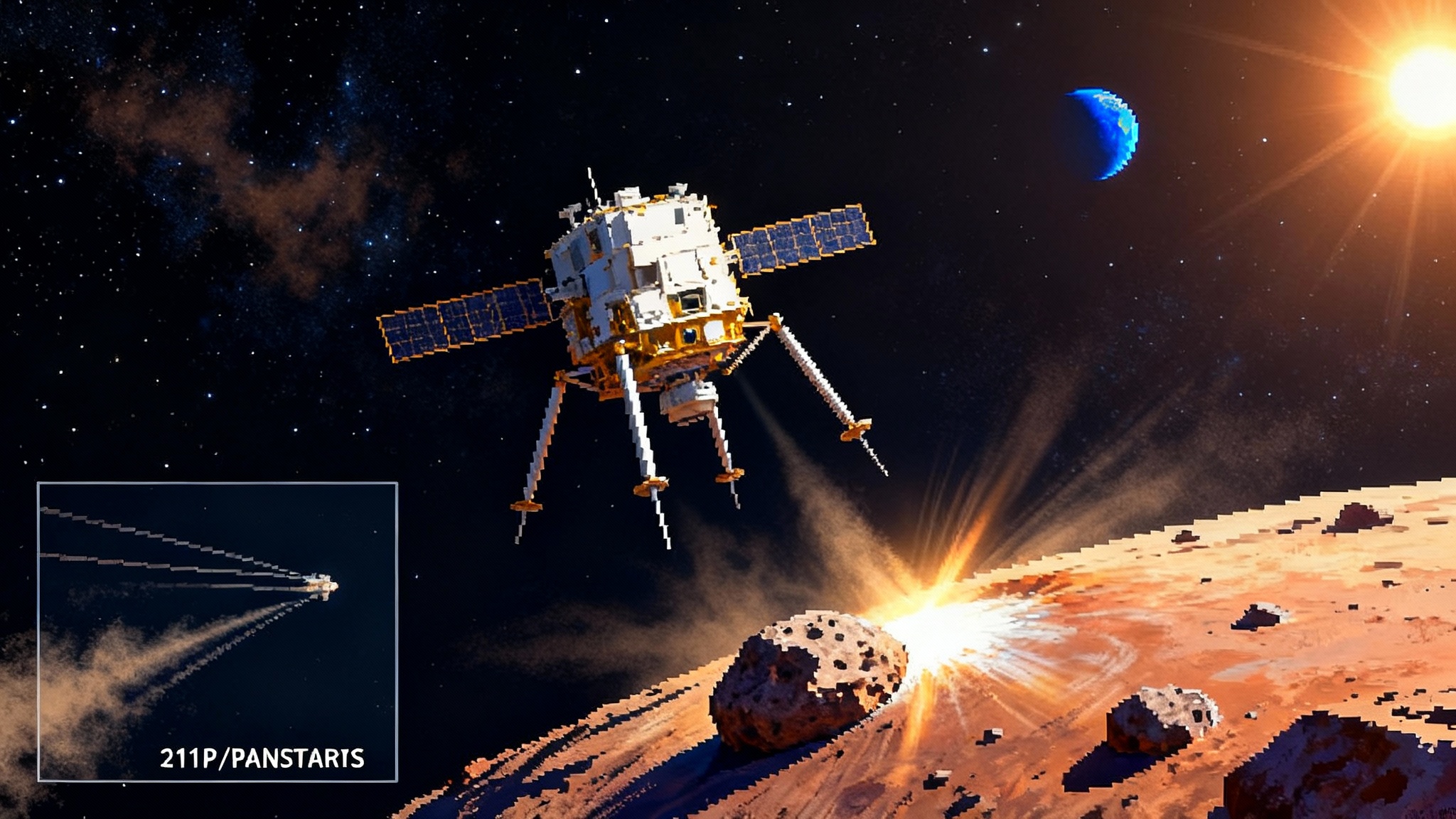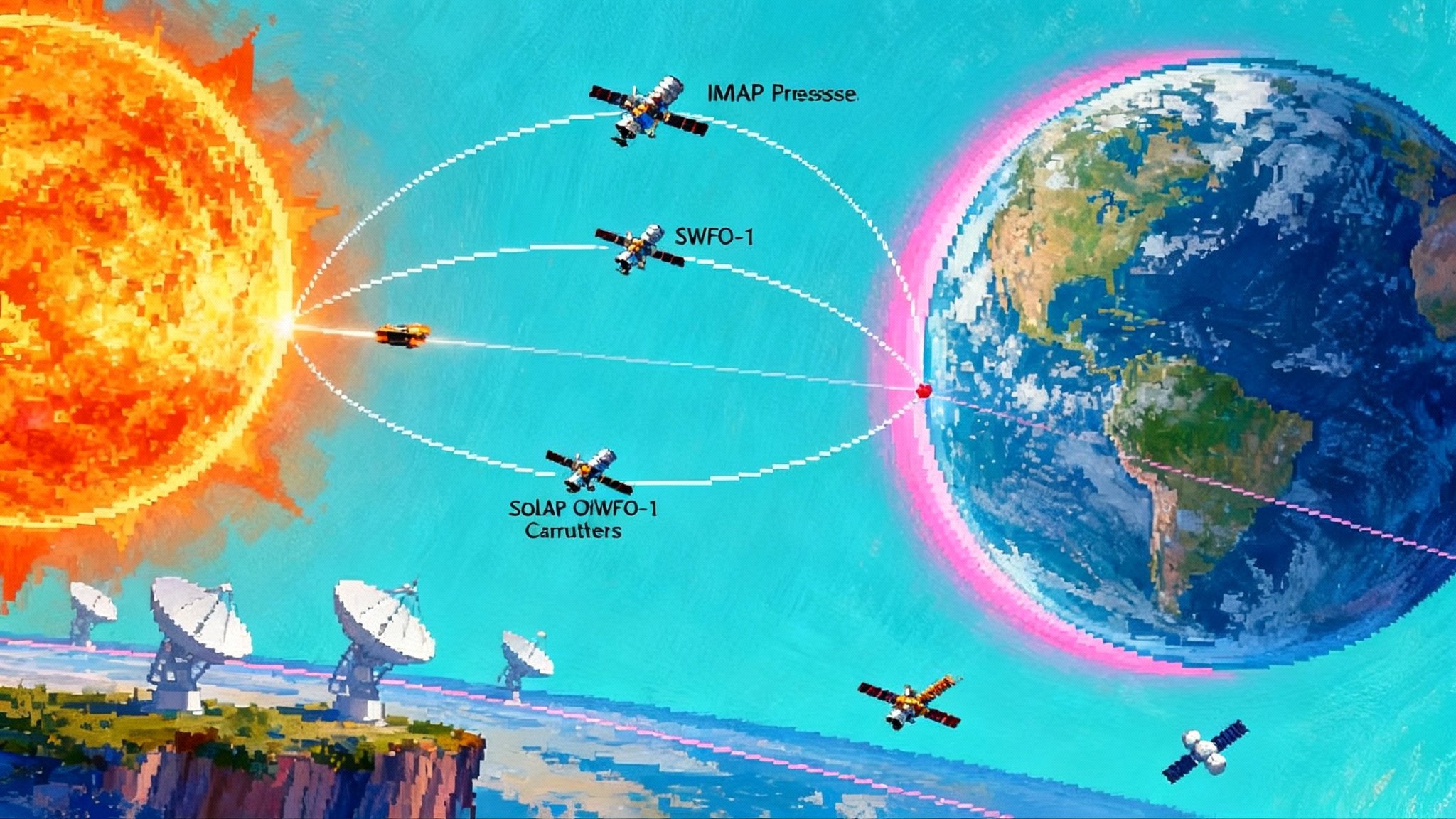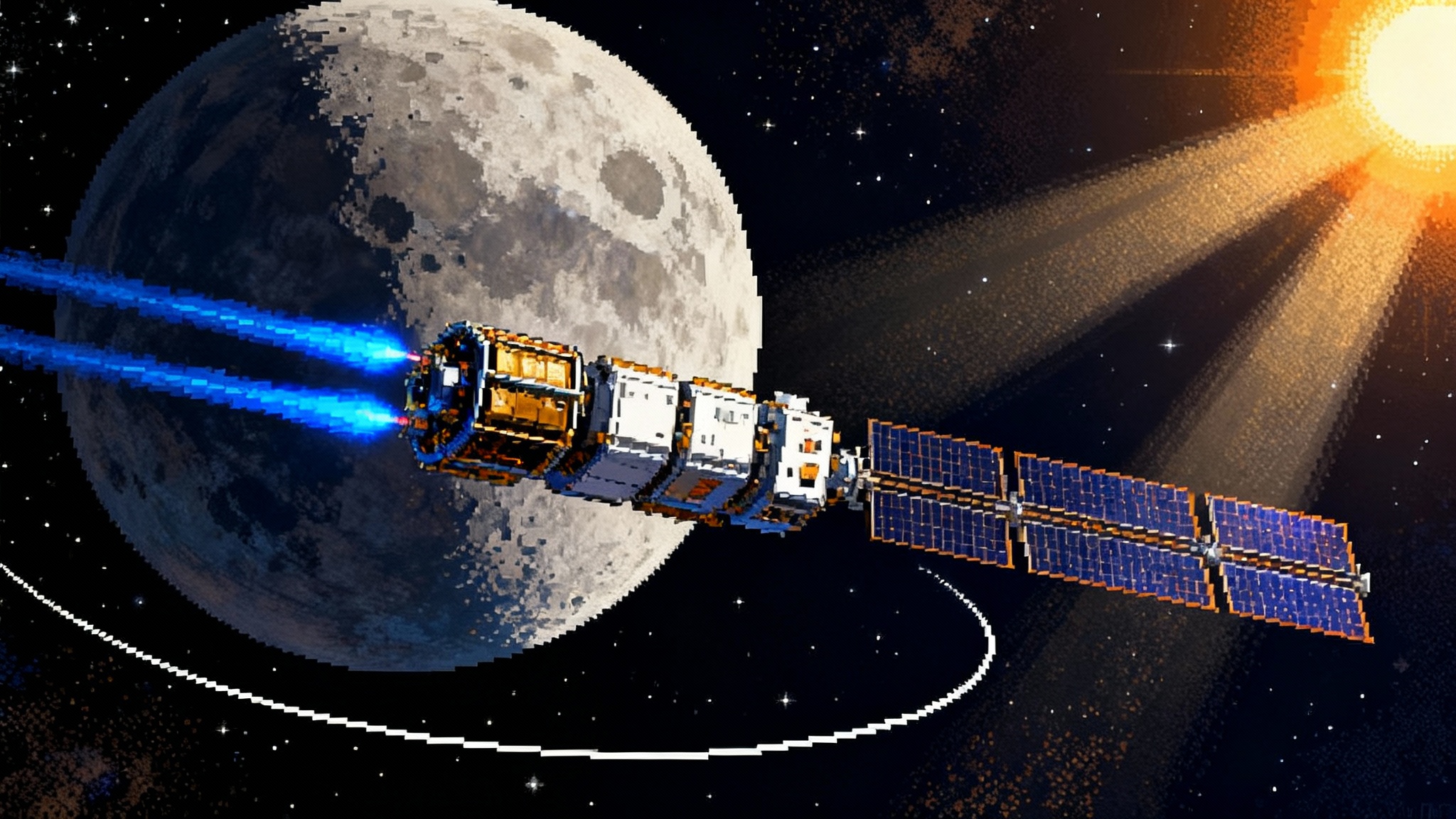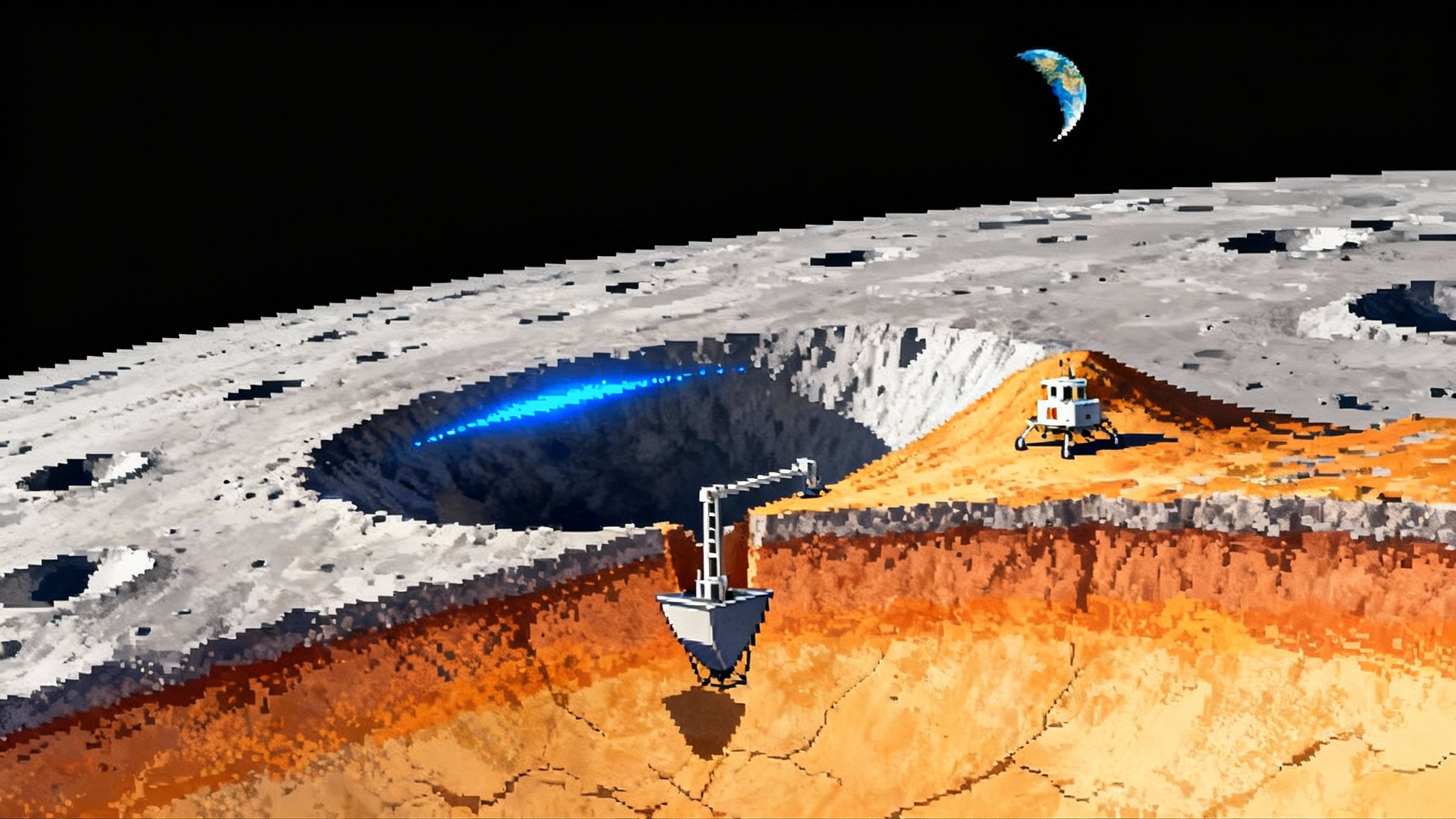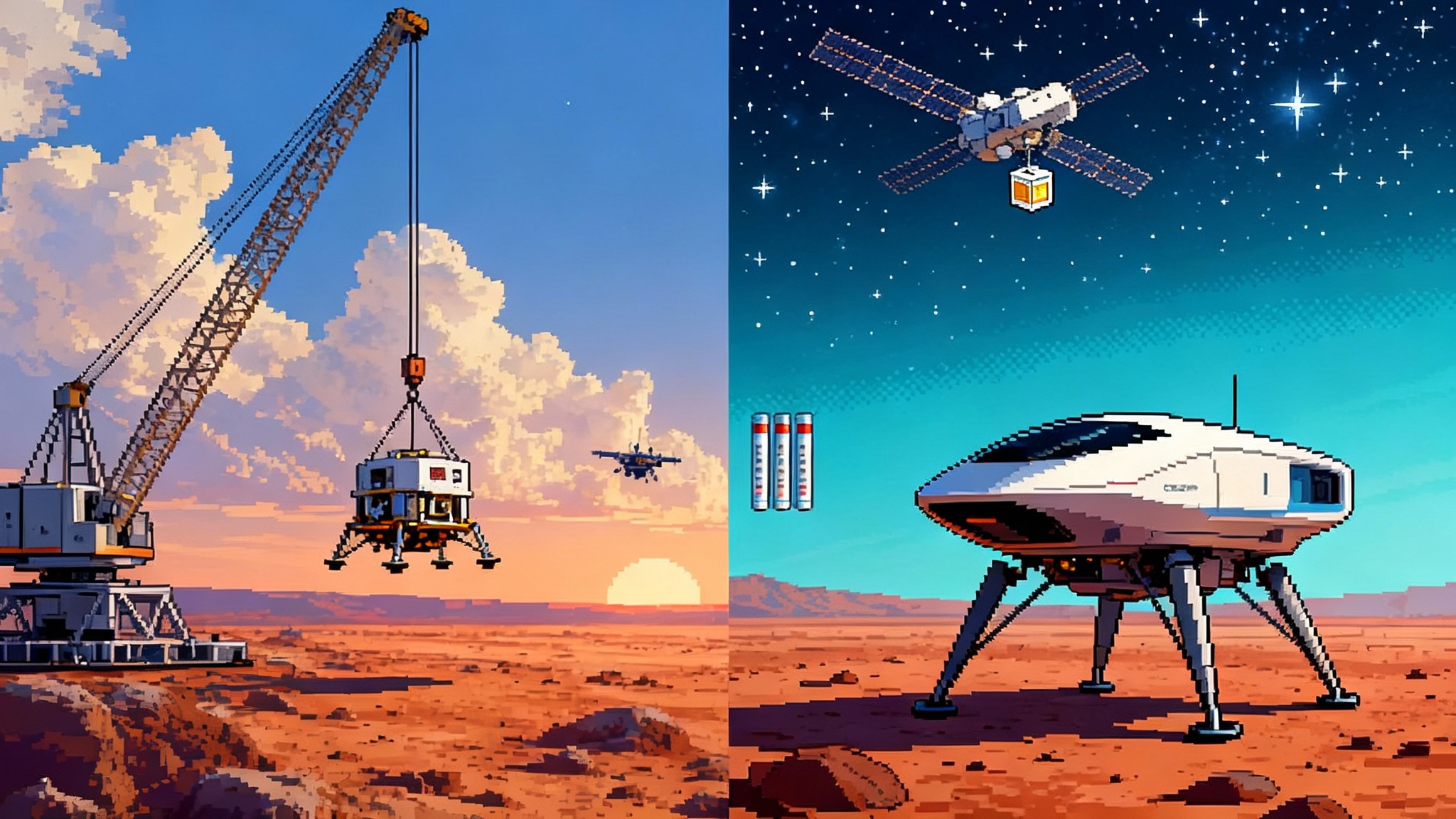Dragonfly clears CDR, Titan drone moves from plan to build
NASA’s Dragonfly rotorcraft has cleared its Critical Design Review, moving from paper to parts on the path to Titan. Here is what CDR unlocks, why Titan favors flight, and what milestones to watch on the road to a planned 2028 launch.
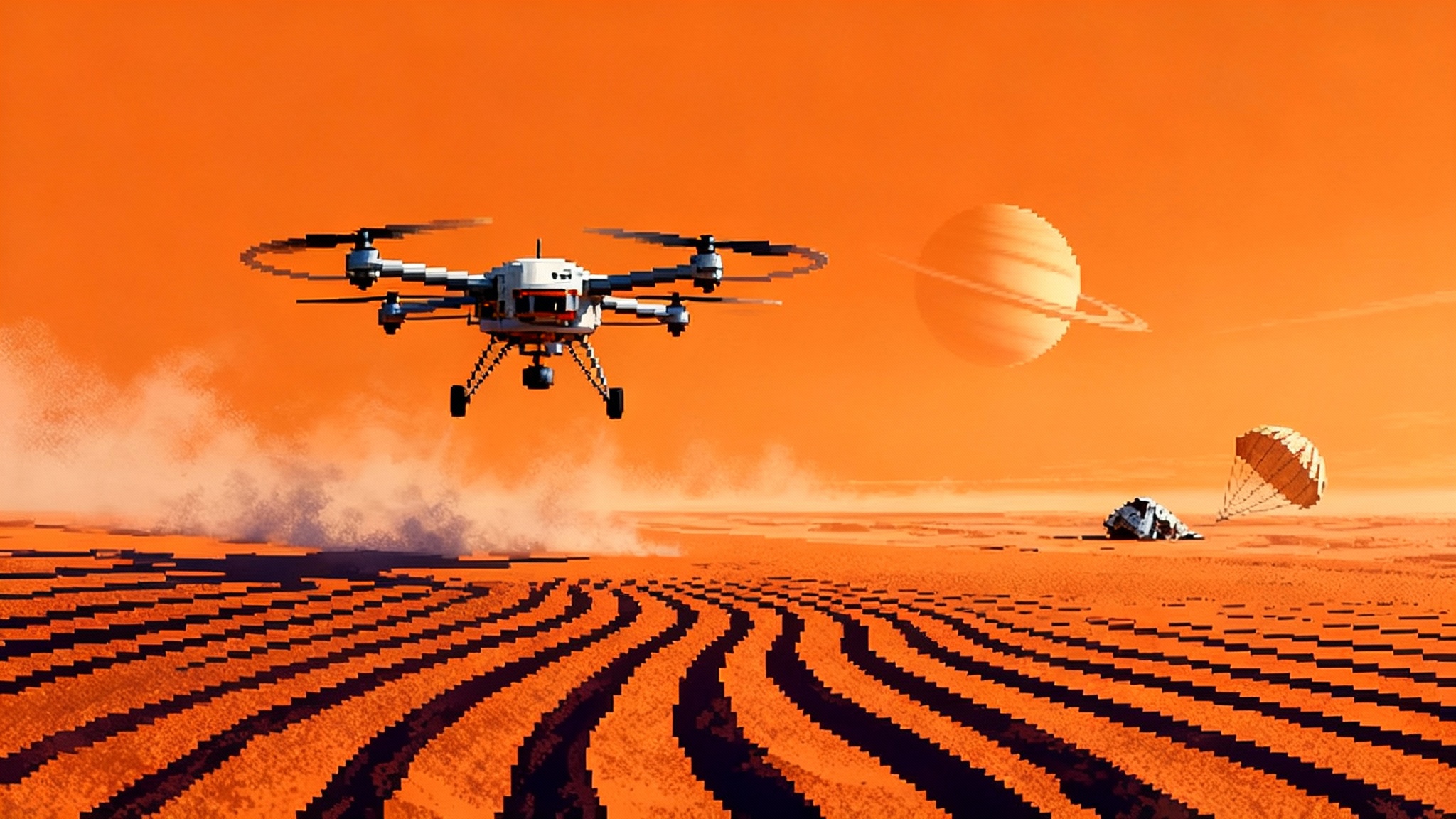
What just happened, and why it matters
On April 25, 2025, NASA’s Dragonfly rotorcraft lander passed its Critical Design Review, the most rigorous system-level checkpoint before full-scale fabrication and test. The lead center confirmed the milestone, noting that the team can now move from paper and prototypes to the hardware that will fly to Titan. JHUAPL confirms CDR completion. NASA is still working toward a July 2028 launch on a SpaceX Falcon Heavy, a date that keeps one of the decade’s most consequential exploration bets on track.
CDR is where an interplanetary concept either becomes real or is sent back for rework. As seen when Blue Alchemist clears CDR, the milestone turns designs into hardware and schedules into integration plans. For Dragonfly, it unlocks a tightly choreographed sprint to build a nuclear powered, car sized octocopter able to breathe Titan’s dense air, survive its cryogenic cold, and hop tens of kilometers between science targets with minimal help from Earth.
What CDR approval actually greenlights
A successful CDR is more than a green badge on a slide deck. It authorizes concrete programmatic and engineering steps:
- Final hardware procurement for flight: including long lead avionics, radios, actuators, composite structures, and rotor assemblies.
- Flight software feature freeze: so teams can converge on verification rather than chase new functionality. Remaining work focuses on validation, fault protection tuning, and autonomy robustness.
- MMRTG integration planning: the Multi Mission Radioisotope Thermoelectric Generator will trickle charge onboard batteries for flight and keep the vehicle warm through Titan’s deep cold.
- Environmental test campaigns: vibroacoustics and shock for launch loads, thermal vacuum for space, EMI and EMC for the avionics bay, and extensive rotor system endurance testing.
- Mission assurance gates into ATLO: final drawings, parts lists, build travelers, and quality controls become the single source of truth for the flight article.
In other words, CDR turns risk into work. The team trades architecture debates for integration schedules, and the mission shifts from concept risk to execution risk.
Why Titan favors flight
Powered flight on another world sounds like science fiction, but Titan is uniquely friendly to rotorcraft.
- Dense atmosphere: Titan’s surface pressure is about 1.5 times Earth’s. Air density is more than four times higher than at sea level on Earth, so rotors get useful lift at lower tip speeds with reduced aerodynamic stress and energy cost per meter traveled.
- Low gravity: Titan’s gravity is about one seventh of Earth’s, slashing the thrust and energy needed to climb and hover.
- Cold but calm: Near 94 Kelvin at the surface, Titan is frigid. Cold is a challenge for materials and batteries, but the thick atmosphere damps winds and helps with stability. The MMRTG provides steady waste heat that becomes a thermal asset.
Add those together and you get a rare combination. Flight is easier than on Earth even though sunlight is feeble and the air is nitrogen rich with methane traces. Wheels would struggle in soft organic dunes and possible hydrocarbon frost. A hopper can pick its way across hazards, reach fresh outcrops, and sample sites kilometers apart without depending on a relay orbiter.
The hopper advantage for astrobiology
Dragonfly’s core hypothesis is simple. Titan delivers organics at planetary scale. Sunlight and Saturn’s magnetosphere drive chemistry in Titan’s atmosphere, building complex hydrocarbons and nitriles that snow down onto the surface. In rare events when liquid water becomes available, such as an impact that melts an icy crust, those organics could cook in a warm solvent long enough to make prebiotic molecules.
A mobile laboratory lets scientists test that hypothesis across environments:
- Dunes: dark equatorial seas of sand made from organic particles. These record atmospheric chemistry and surface processes. Scoops and drills can feed grains into the mass spectrometer to measure molecular weights, isotopic ratios, and functional groups.
- Impact melt deposits: sites where an impact briefly created liquid water mixed with ammonia. If complex chemistry took hold, these are the places to look for heavier organics, polymerization signatures, and patterns that are hard to make without sustained liquid phases.
- Organic rich terrains: hummocky plains, interdune areas, and ejecta where diverse feedstocks mix. The gamma ray and neutron spectrometer can map bulk composition before committing to sampling.
By hopping, Dragonfly changes the statistics of discovery. Instead of one or two trenches within the reach of a robotic arm, it can sample at dozens of sites along transects that cut across terrain boundaries. That makes any detection of complex organics more robust and any non detection more meaningful.
Lessons carried forward from Ingenuity and Huygens
Two pathfinders shape Dragonfly’s plan. Ingenuity showed that aerial exploration is not a stunt. The Mars helicopter turned a one month demo into a multiyear campaign, surviving dust, winter, and navigation challenges while scouting routes and hazards. While Titan’s environment is the opposite of Mars in many ways, Ingenuity proved the value of rotorcraft for reconnaissance, precision landing, and operations tempo.
Then there is Huygens. In 2005 the ESA built probe rode with Cassini, parachuted through Titan’s haze, and landed in a floodplain of rounded pebbles. Huygens measured winds, haze layers, and surface properties during a single afternoon. Those data still anchor our models of Titan’s weather, boundary layer, and methane cycle. They also revealed a landscape shaped by fluvial erosion and deposition, strong hints that liquid hydrocarbons flow on modern Titan.
Dragonfly connects these legacies. It takes the local sensing Huygens pioneered and gives it wings. It takes the operations playbook Ingenuity pioneered and adapts it to an ocean world with a sluggish day and a sky of smog.
Risk, cost, and schedule in New Frontiers context
New Frontiers missions are designed to tackle focused, high value questions within a cost box. New Horizons opened the Pluto system. Juno rewrote our view of Jupiter’s interior. OSIRIS-REx returned samples from a near Earth asteroid. For comparison within the program, the OSIRIS-APEX Earth flyby highlights how mission profiles evolve on tight timelines.
- Complexity: Dragonfly is both a lander and an aircraft, with planetary protection, entry descent and landing, and aircraft style redundancy. Its autonomy must handle takeoffs, landings, navigation, and science while Earth is more than an hour of light time away.
- Environment: materials, lubricants, and batteries must operate at cryogenic temperatures. The vehicle must reject waste heat to stay upright in a cold dense atmosphere, then trap that heat to keep electronics alive through long Titan nights.
- Programmatic risk: the pace between CDR and launch is tight for a first of a kind system. Long lead parts, qualification of the rotor system, and MMRTG delivery all sit on the critical path.
Costs reflect that ambition. Earlier New Frontiers missions closed near one billion dollars to a little over one billion for development, then rose with operations and extended missions. Dragonfly is now a several billion dollar mission through operations, which makes management of risk and schedule central to keeping science intact. Passing CDR is a positive indicator. It narrows unknowns and clears the way for the disciplined build and test that keeps surprises from erupting late.
How autonomy will actually work
Autonomy is not a single module. It is a stack of capabilities that each have to be tested to failure and recovered. Dragonfly will build maps from onboard cameras and lidar like sensors, estimate motion with visual odometry, and use inertial sensing to hold attitude through gusts. Hazard detection will downselect landing patches that meet slope and roughness constraints. Fault protection will decide whether to wave off a landing and climb, or commit and throttle a rotor pair to correct for a soft patch.
Because there is no Titan relay orbiter, communications must go direct to Earth with a high gain antenna. That makes every data window precious, and it forces the vehicle to prioritize low bandwidth science products. Compressed panoramas will guide route planning. High priority spectra, weather logs, and seismometer snippets will flow first, with bulk data returning over many passes.
The seven year cruise and a first stop in Shangri La
The current plan keeps a July 2028 launch on Falcon Heavy. From there Dragonfly embarks on a roughly seven year cruise to the Saturn system. It will perform deep space checkouts, software updates, and calibration campaigns during cruise, all while the MMRTG hums and the flight batteries are pampered.
Arrival at Titan comes with a full entry, descent, and landing sequence. The spacecraft hits the atmosphere protected by a heat shield and backshell. Parachutes deploy to bleed speed. As dynamic pressure and altitude converge on targets, the vehicle drops the heat shield to expose sensors. Then the backshell and parachute cut away, the rotors spin up, and Dragonfly transitions to powered flight. That last phase is decisive. It allows the vehicle to sidestep hazards, find a flat and safe patch, and set down under control.
The first planned landing zone is in the equatorial dune fields of Shangri La, a dark province that offers flat terrain for early flights and ready access to diverse sand chemistry. From there, the team intends to work toward the ancient Selk impact structure, sampling along the way.
What a Titan day looks like to a rotorcraft
Titan rotates once every 16 Earth days. That slow day sets the schedule. The MMRTG provides constant electricity but only at a modest rate. Dragonfly will spend most of its time stationary, charging its flight battery, running life support heaters, and analyzing samples. When charge and weather align, it will fly for tens of minutes, covering kilometers at a time, then settle again to work.
Navigation will stitch these hops into a purposeful traverse. The plan is to build a corridor of overlapping imaging and instrument footprints, so that every stop refines the context for what came before. Seismology and meteorology benefit from time on the ground. Each long pause is a chance to listen for Titanquakes, log winds and temperatures, and watch for changes that mark hydrocarbon weather.
The instrument suite, in brief
- Mass spectrometry: a miniature organic chemistry lab that can sniff gases, pyrolyze solids, and read out molecular fingerprints and isotopic ratios. This is the workhorse for prebiotic chemistry.
- Gamma ray and neutron spectroscopy: a way to sense elemental composition below the skin. It highlights targets likely to hold different chemistries before committing to drilling.
- Meteorology and geophysics: pressure, temperature, humidity, and winds to anchor models. A small seismometer to hunt for quakes that illuminate Titan’s crust.
- Imaging: panoramic and microscopic views for terrain reading, context, and sample selection. Imaging also feeds navigation, hazard detection, and flight planning.
Together, these tools aim at a single question. Can a world with abundant organics, episodic access to liquid water, and chemical energy gradients climb the ladder toward life’s building blocks, or even life itself, in ways we can recognize?
What success looks like
Dragonfly’s baseline mission does not require a single decisive detection. Instead it seeks converging lines of evidence. Patterns in molecular weight distributions that favor longer carbon chains than simple photochemistry would produce. Isotopic ratios that suggest fractionation by liquid phase processes. Co location of certain nitriles and ring structures near melt deposits. Even negative results would reshape theory. If Titan’s inventory of organics refuses to organize into more complex chemistry where liquid water was available, that outcome narrows the parameter space for life everywhere.
Operationally, success is also measured in tempo. Multiple flights, sites with distinct geology, repeat measurements to check for time variability. The team will celebrate resilience as much as any single spectrum.
What to watch between now and launch
- Rotor system qualification: demonstrations of efficiency, vibration margins, and fault tolerance across temperature extremes.
- Autonomy testbeds: end to end runs where the flight software flies a high fidelity surrogate through obstacle courses and simulated Titan lighting and haze.
- MMRTG delivery: arrival of the power system to the integration floor, followed by mechanical and electrical fit checks.
- Environmental test campaigns: shakes, vacuums, and chambers that find the weakest link before the rocket does.
- ATLO milestones: the day the flight structure and avionics meet for the first time is when a spacecraft finally feels real.
Each of these steps is a chance to retire risk early. The CDR win clears the path to do exactly that.
Why this is the bet of the decade
Astrobiology advances one environment at a time. Mars gives us a cold desert with liquid water in the past. Europa and Enceladus give us active ice and interior oceans. Titan is the third pillar, a surface world where carbon and nitrogen chemistry run wild and liquid water may appear in fits and starts. Dragonfly is how we test whether complex chemistry can bootstrap itself in such a place.
It is also a demonstration of a new way to explore. If a nuclear powered hopper can operate for years on Titan, then mobility stops being a luxury and becomes a design principle for future missions, from Venus cloud flyers to Io hoppers and Europa skimmers. Multi target strategies like the Tianwen-2 two-stop quest foreshadow how mobility broadens science returns.
The next public inflection points will be visible hardware, rotor spin tests, and the cadence of ATLO. And as the calendar turns toward 2028, keep an eye on the launch campaign that will send a flying laboratory to one of the strangest shorelines in the solar system. For scope, ambition, and potential for discovery, Dragonfly stands alone among missions now on the books. To understand where life could start, we sometimes have to go where sunlight is weak and the air runs thick. That is Titan, and Dragonfly is on its way.
Further reading
For official mission details and background on science goals and operations, see the NASA Dragonfly mission overview.
